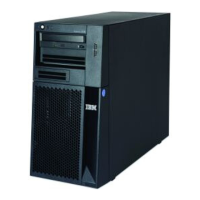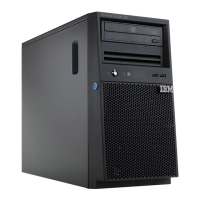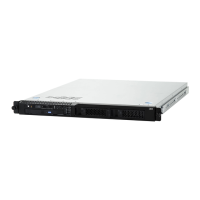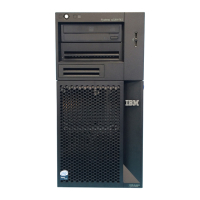190 IBM z13s Technical Guide
connections, a channel path can be a physical connection to a control unit with I/O devices,
like FICON, or an internal logical one, like HiperSockets.
Each channel path in a channel subsystem has a unique 2-digit heximal identifier that is
known as a channel-path identifier (CHPID), range from 00 to FF. So a total of 256 CHPIDs
are supported by a CSS, and a maximum of 768 CHPIDs are available on z13s servers, with
three logical channel subsystems.
By assigning a CHPID to a physical port of an I/O feature card, such as a FICON
Express16S, or a fanout adapter port, such as an ICA-SR port, the channel subsystem
connect to I/O devices through these physical ports.
A port on an I/O feature card has a unique physical channel ID (PCHID) based on the
physical location of this I/O feature card, and the sequence of this port on the card.
Also, a port on a fanout adapter has a unique adapter identifier (AID), according to the
physical location of this fanout card, and the sequence of this port on the card.
A CHPID is assigned to a physical port by defining the corresponding PCHID, or AID in the
I/O configuration definitions.
A CHPID can be assigned to a physical port of an I/O feature card in an InfiniBand (IFB) I/O
drawer or a PCIe I/O drawer, in a multidrawer CPC.
Control units
A control unit provides the logical capabilities that are necessary to operate and control an
I/O device. It adapts the characteristics of each device so that it can respond to the standard
form of control that is provided by the CSS.
A control unit can be housed separately, or can be physically and logically integrated with the
I/O device, the channel subsystem, or within the z Systems server itself.
I/O devices
An I/O device provides external storage, a means of communication between
data-processing systems, or a means of communication between a system and its
environment. In the simplest case, an I/O device is attached to one control unit and is
accessible through one or more channel paths that connect with the control unit.
5.1.2 Multiple subchannel sets
A subchannel set is a collection of subchannels within a channel subsystem. The maximum
number of subchannels in a subchannel set determines how many I/O devices that a channel
subsystem can access. This amount determines the number of addressable devices to the
program, an operating system for example, that runs in that LPAR.
Each subchannel has a unique 4-digit heximal number, range from 0x0000 to 0xFFFF. Thus,
a single subchannel set can address and access up to 64K I/O devices.
MSS was introduced with z9 to extend the maximum number of addressable I/O devices for a
channel subsystem.
z13s servers now support three subchannel sets for each logical channel subsystem, and is
capable of accessing a maximum of 191.74K devices for a logical channel subsystem, and
therefore the logical partition and the program running on it.

